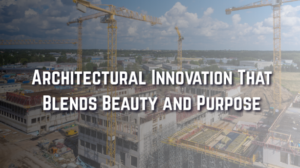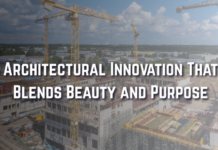
Dubai’s skyline continues to evolve as a global benchmark for architectural innovation, where each project embodies excellence, ambition, and modern vision. At the heart of this evolution lies commercial construction, a sector that has redefined how urban spaces are designed, built, and experienced. Blending functionality with aesthetics is no longer optional—it’s essential to creating commercial environments that enhance productivity, sustainability, and appeal.
The modern architectural landscape of Dubai thrives on a balance between art and engineering, ensuring that commercial spaces not only serve business purposes but also reflect creativity and identity. As global standards rise, commercial buildings are expected to inspire, engage, and perform while remaining structurally sound and environmentally efficient.
The Evolution of Modern Commercial Architecture
Over the past two decades, Dubai has transformed from a regional trade hub into a global business destination. This rapid rise has been powered by an unprecedented wave of commercial infrastructure development—from office towers and shopping complexes to business parks and mixed-use developments.
The concept of commercial architecture has shifted from mere construction to experience-driven design. It’s no longer about erecting concrete and glass structures; it’s about creating ecosystems where businesses thrive, people connect, and innovation flourishes. This transformation is deeply rooted in the integration of advanced technology, sustainable materials, and human-centered design principles.
Architects and engineers now work together to create spaces that optimize daylight, reduce energy consumption, and enhance workflow efficiency. Whether through open floor plans, smart lighting, or energy-efficient façades, the focus remains on sustainability and usability, shaping Dubai’s commercial landscape into a model for the future.
Designing for Productivity and Comfort
In today’s competitive business world, commercial spaces must do more than just accommodate employees—they must inspire them. The aesthetic appeal of a workplace directly impacts motivation, focus, and creativity. By blending modern design with functionality, Dubai’s commercial architecture achieves that delicate balance between comfort and purpose.
Natural lighting, ergonomic layouts, and the inclusion of biophilic design elements like indoor plants and natural textures are transforming traditional workplaces. These design strategies improve not only employee well-being but also operational efficiency.
For example, modern office buildings in Business Bay and Downtown Dubai now feature flexible work zones, collaborative spaces, and eco-friendly materials that promote sustainability and productivity simultaneously. This alignment of form and function reflects the city’s forward-thinking vision, where architecture is as much about people as it is about progress.
Sustainability as a Design Imperative
Dubai’s commercial architecture is also being shaped by the global push for environmental responsibility. Green building standards like LEED and Estidama are now integral to major projects, setting benchmarks for energy use, waste reduction, and material efficiency.
Sustainable largest construction company in dubai projects are integrating renewable energy systems, water recycling mechanisms, and intelligent HVAC systems to reduce operational costs and carbon footprints. The result is a new generation of commercial buildings that are not only beautiful and efficient but also environmentally conscious.
By embracing these standards, developers are redefining Dubai’s construction narrative—one that values longevity over speed and sustainability over short-term gains. This mindset ensures that every commercial space contributes positively to the city’s broader environmental goals, reinforcing Dubai’s position as a global sustainability leader.
Technology’s Role in Shaping Modern Design
Technology continues to revolutionize commercial construction and redefine what’s possible in commercial architecture. Building Information Modeling (BIM), AI-driven project management, and 3D visualization tools allow architects and engineers to anticipate challenges, optimize resources, and achieve precision before construction even begins.
Smart building systems have become the new norm, offering real-time monitoring of energy consumption, lighting, and climate control. Automated systems enhance user comfort while reducing maintenance costs—an ideal combination for modern business environments.
Additionally, digital twin technology is gaining traction in Dubai’s construction scene. By creating a digital replica of a physical building, teams can track performance, identify inefficiencies, and make data-driven improvements over time. These innovations demonstrate that the future of commercial architecture lies at the intersection of creativity, data, and intelligence.
Aesthetic Identity and Cultural Expression
What makes Dubai’s skyline distinct is its ability to merge global design influences with regional identity. Commercial architecture here isn’t just functional—it tells a story. From the elegant glass façades of DIFC towers to the Arabic geometric patterns incorporated into business centers, every project carries a unique cultural signature.
Developers and designers now understand that aesthetics go beyond beauty—they create an emotional connection. A visually striking building can serve as a landmark, boost brand reputation, and inspire community engagement. By merging contemporary design techniques with local cultural motifs, architects in Dubai have successfully created commercial landmarks that are both globally admired and regionally relevant.
This thoughtful fusion of tradition and innovation reflects Dubai’s spirit—bold, progressive, and deeply rooted in heritage.
The Role of Collaboration in Modern Projects
In a city that thrives on scale and innovation, collaboration is key to success. Architects, engineers, interior designers, and sustainability experts work together to achieve a unified vision.
This multidisciplinary approach ensures that every project is optimized for performance, aesthetics, and environmental balance. The involvement of experienced developers and government authorities further enhances quality control, ensuring that new projects align with Dubai’s master plan for sustainable growth.
Such collaboration transforms commercial construction into a collective art form—one that harmonizes expertise, creativity, and precision.
Conclusion: Shaping Tomorrow’s Commercial Legacy
Dubai’s commercial architecture stands as a testament to human ambition, creativity, and collaboration. Each development contributes to the city’s evolving identity as a global hub of design and innovation. The merging of functionality and aesthetics has redefined what modern business spaces can achieve—environments that elevate experience, performance, and sustainability in equal measure.
As technology advances and sustainability takes center stage, the commercial sector will continue to evolve, setting new standards for quality and efficiency. Every skyscraper, office complex, and retail hub reflects Dubai’s relentless pursuit of perfection, proving that great design goes hand in hand with great purpose.
The expertise and commitment of construction contractors in dubai ensure that this legacy endures—transforming bold ideas into timeless architectural realities and keeping Dubai at the forefront of global commercial development.

















